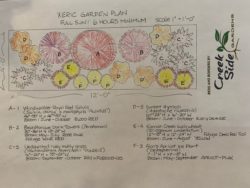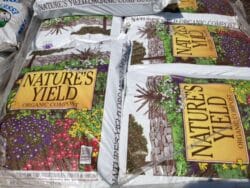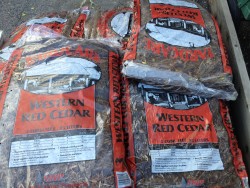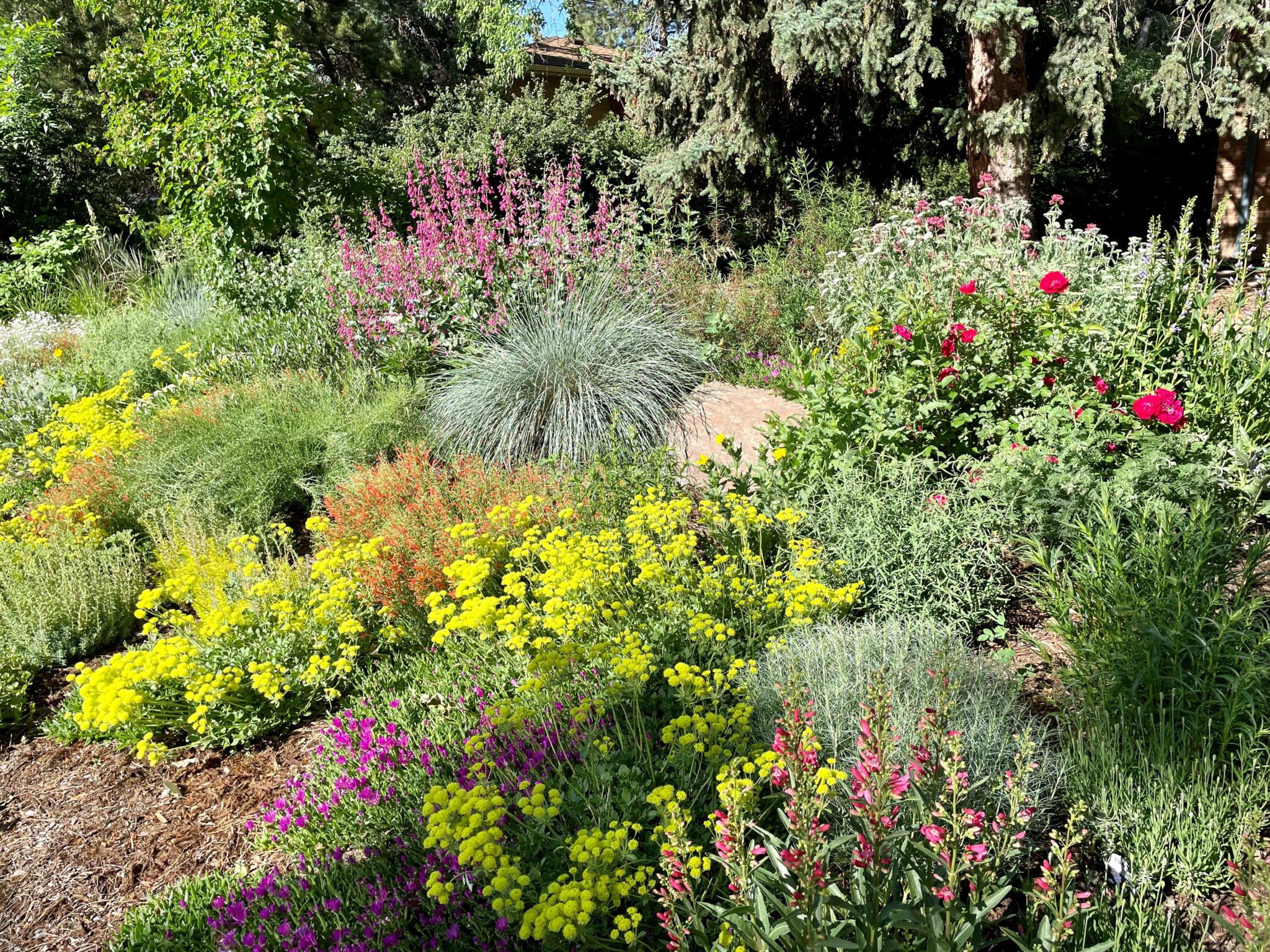Colorado is a semi-arid state, averaging 10”-16” of precipitation per year! Waterwise landscaping, also known as xeriscaping, is planning and designing your landscape for low water usage, rethinking the use of turf grass and it’s huge water requirements, improving porosity of soil for more efficient water applications, selecting plant material by paying attention to their water requirements, reducing water waste with correct irrigation installations, applying appropriate mulches, and regular maintenance of the landscape.
Xeriscaping is not “desert-scaping.” It is not an exercise in removing turf, minimizing or deleting irrigation, adding only “native,” or “drought-tolerant,” plant material, suffocating the soil with weed fabric and mulching with rock. This approach may look okay the first season, but it will slowly turn into a landscape of weeds, loss of desirable plant material and eventually require more maintenance.
WATER-SAVING “XERISCAPE” PRINCIPLES
PLAN AND DESIGN
It all begins here. Photograph the area you’re planning to design. Then research, analyze, question, and brainstorm ideas for the area. Draw a rough sketch of the ideas. If possible, draw all the plants and other items to scale on a separate plan. Elements to consider in your plan: sun or shade, line, texture, color, scale and proportion, simplicity, repetition, balance, logic.
CREATE PRACTICAL TURF AREAS
Decide what type of turf area is required and what it will be used for? Understand the differences of various types of turf area for wear tolerance, appearance, water requirement, exposure, fertilization and turf grass species.
Quality of any turf is directly dependent on the amount of summer rainfall and supplemental irrigation it receives.
Consider creating an area which is just the right size for bare feet, small picnic, or laying back in the cool, green grass to gaze at the clouds.
USE APPROPRIATE PLANTS AND *HYDOZONE THE LANDSCAPE
Choose plants that will thrive in low water application conditions. Creek Side Gardens offers a big selection of low water perennials, shrubs and trees that may be perfect for your Colorado Smart Garden design. Including, Plant Select brand plants, a collaboration between Colorado State University and the Denver Botanic Gardens. See Water-Wise Perennials for Colorado
Another great reference is the Colorado State University Extension website which publishes many free “ Fact Sheets” which list plants and plant care. Search www.extension.colostate.edu
*‘Hydrozone’ – creating landscaped groupings or areas in which plants are matched so they use water at more or less the same rate (best use for irrigation efficiency & plant health).
CONSIDER IMPROVING THE SOIL
 Well managed western soils have 25% air, 25% water (pore spaces), 1-5% organic matter (dead & living), and 49% mineral solids, comprise the (solid particles).
Well managed western soils have 25% air, 25% water (pore spaces), 1-5% organic matter (dead & living), and 49% mineral solids, comprise the (solid particles).
A typical compacted, unamended landscape soil (which is common in Colorado), has 10% air, 20% water, 1% organic matter and 69% mineral solids. Not the best growing foundation for plants.
Adding soil amendments such as organic compost allow for better absorption of water and improved water holding capacity of the soil. Organic matter also provides beneficial nutrients to plants and air for deep root growth.
Test your soil as soon as soil sample can be dug. Stop by Creek Side at the beginning of March to pick up a soil test kit. For a small fee you can send your sample to the CSU Horticulture Department in Ft. Collins. They will analyze your samples and offer expert recommendations to get your soil ready for the 2017 growing season. Bring your soil test results into Creek Side and we will help you interpret the results.
CONSIDER MULCHES
 Mulches are an important consideration in your Colorado Smart Garden design plan because the do so many good things including:
Mulches are an important consideration in your Colorado Smart Garden design plan because the do so many good things including:
- Reduction of water evaporation from the soil
- Reduction in weed growth
- Reduce soil erosion
- Regulates soil temperature
Recommended application of mulch is to a depth of 3”-4”. Organic sources include bark chips, wood grindings and pole peelings etc. Non-organic sources include rock and gravel products.
IRRIGATE EFFICIENTLY
Newly transplanted plants – even low-water and xeric plants require regular waterings through the first growing season to help them get established. Once established, these plants prefer to be watered more deeply and less frequently. Colorado State University Extension and Denver Water are good resources that will illustrate water usage and formulas for calculating gallons of water required in your landscape.
A helpful rule of thumb, when your sprinkler system or a rain storm produces 1/2” water, soils will only be wet 3”-4” deep, leaving the roots dry beneath. If you get ½” of rain over several days in a row, the soil moisture will be pushed deeped.
Understand your irrigation system and it’s designed output in gallons/time. Whether it is drip, hose end, or sprinkler head, each one of these application methods is calculated to put out a certain volume of water over a prescribed period of time. Often gallons per hour.
MAINTAIN THE LANDSCAPE APPROPRIATELY
Just like nature, there are four seasons of care ~ Winter, Spring, Summer and Fall ~ in the Colorado landscape and garden. Apply water according to plant needs, rather than water applications based on a schedule.
Weeding-the best time is when they are small and can be removed easily. This alleviates having to use chemical treatments or manual labor to remove when the weeds have grown larger.
The need for understanding fertilization of plants or amending the soil can be assessed with a simple soil test so the proper amounts can be applied at the appropriate times.
Pest control. It is better to be proactive and learn which pests cycle in an out of the seasons in Colorado and be prepared to meet them head on, before considerable damage or loss has occurred in the landscape.
Creek Side Gardens is here to help you make your garden and landscape the best ever. Stop by anytime and discuss your questions with our Green Team staff of gardening experts. Contact us with your questions at [email protected] and check out our weekly ‘Planting Trends’ at www.PlantsByCreekSide.com

